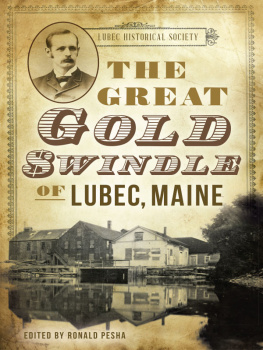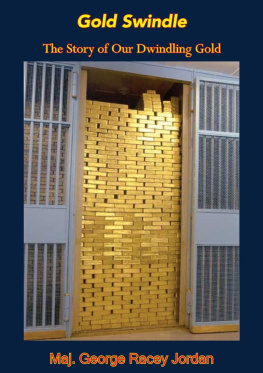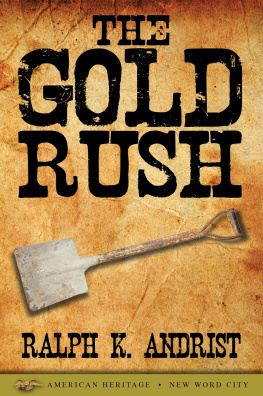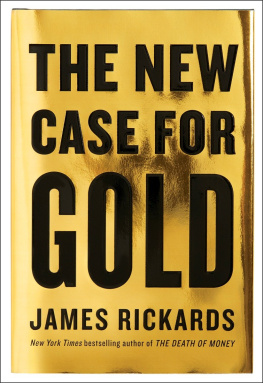
Published by The History Press
Charleston, SC 29403
www.historypress.net
Copyright 2013 by Lubec Historical Society
All rights reserved
First published 2013
e-book edition 2013
Manufactured in the United States
ISBN 978.1.62584.086.8
Library of Congress CIP data applied for.
print edition ISBN 978-1-62619-008-5
Notice: The information in this book is true and complete to the best of our knowledge. It is offered without guarantee on the part of the author or The History Press. The author and The History Press disclaim all liability in connection with the use of this book.
All rights reserved. No part of this book may be reproduced or transmitted in any form whatsoever without prior written permission from the publisher except in the case of brief quotations embodied in critical articles and reviews.
IN MEMORIAM
In memory of Edith E. Comstock (19172012), who lived all her life in North Lubec, collecting and preserving local history, and was a contributor to this book.
In memory of Bernard M. Ross (19242013), active Lubec Historical Society member for a third of a century and 1978 transcriber of the entire Carrie Bangs text from the original newspaper series.
Contents
Foreword
If you think about gold from seawater, then we are living the modern-day version by residing in this small, seaside town of Lubec, Maine. Lubec is our treasure, perhaps even Maines most curious little town you never heard of. We live in a place that draws its character from the water that surrounds us on three sides. We are lucky to have old salts living among us such as Ron Pesha. He spends his days tirelessly researching Lubecs past, including its true and very distinguished gold-from-seawater days of 1898. People believed in Lubec then, and even better, they believe in Lubec today. Our town brims once again with intrepid folks and entrepreneurial spirits. We hope you come see for yourselves because Lubec in 2013 is revived and ready for business. And unlike Jernegan and company, we know what an honest days work is.
The Honorable Katherine Cassidy
Lubec, Maine Representative
126th Maine Legislature
Preface
The account of this remarkable 1898 hoax was chronicled weekly by the Lubec Herald. Half a century later, Lubec native Carrie Bangs penned a series of articles from 1949 to 1951 for that same newspaper. The opportunity to prepare her account, along with additions from numerous other sources (by no means comprehensive), fell to me.
My narrow and circumscribed research compels me to request submission of corrections and additional data. Considering the meager quantity of historical images herein, I urge anyone holding additional pertinent photographs (such as of the iron bridge at the Canal) to allow high-resolution scanning.
Acknowledgements
Contributors to this volume include Margaret Peggy and Harold Bailey, Pauline Bailey, Tom Dean, Patsy Kelley, Ginny McCaslin, Ginny Morano, Jennifer Multhopp, Davis Pike and Suzanne Plaut. Thank you to the Lubec Historical Society for the use of its documents and pictures; Edith Comstock for pictures; and Bernard Ross for transcribing the articles from Carrie Bangs. In addition, thank you to Gary Gree, the first president of the Lubec Historical Society, as well as all past and current members of the society for their diligence in collecting and preserving the artifacts, documents and articles on Lubecs history over the years. We are forever thankful.
CHAPTER 1
Initiating the Intrigue
Among the passengers debarking from the Boston Boat one evening in early 1898 were two distinguished-looking gentlemen who carried expensive luggage and exuded an air of influence nicely tempered by conservative good taste. One was obviously a man of the cloth, wearing the distinctive black suit and high-buttoned vest associated with the clergy of the period. Pushing through the crowd of passengers and onlookers, they beckoned to a carriage driver and directed him to transport them and their luggage to the Lubec Inn, the best hostelry in town.
Mr. Charles Fisher, formerly of Marthas Vineyard and until recently a floorwalker in a Brooklyn department store, and the Reverend Prescott Jernegan of Middletown, Massachusetts, had two things in common, despite a rather obvious disparity in their backgrounds. One of these was an aversion to gainful employment and the other a burning desire for a fast buck. Those who witnessed the pairs arrival could not know that they were seeing the opening act of a drama whose players were a cast of the most elite suckers ever assembled anywhere.
Thus opens a brief account of extracting gold from seawater. This narrative expands greatly on the 1976 story, reprinting with additions and annotations a comprehensive newspaper series from the mid-twentieth century. We will learn background, the hatching of the scheme and its development and demise from Lubec native Carrie Comstock Bangs. Ms. Bangs (December 3, 1898October 17, 1975) set out to write her full account of the swindle for the weekly Lubec Herald newspaper on her fiftieth birthday in 1948. Half a century had passed since the rise and fall of the scam. Bangs took advantage of 1898 issues of the Herald at hand for reference. The weekly periodical began in 1886, but the only known complete run from volume 1, number 1, through 1909 has since been lost. Thus, the sixty-three weeks of her articles preserve a primary source of history not otherwise available.
Bangs usually cites dates for her many quotes from the Lubec Herald and other newspapers such as the Boston Globe. Frustratingly, she also offers quotations lacking citations of sources or dates. Her columns are reproduced as written, each chapter a weeks column. I offer occasional clarification and additional data within brackets.
THE GOLD FROM SEAWATER STORY OF 1898
Articles 1 & 2, December 16 and 23, 1948
The year 1948 marks the golden anniversary of Lubecs own Klondike of 1898. So much of this remarkable story has become so dimmed in the intervening years as to be almost forgotten. But with the help of those who remember, and by a study of the newspapers of the times, we may hope to recapture the essence of this fantastic tale.
Many absorbing things were going on that year: the Spanish-American War, Bismarcks death, the Dreyfus Affair and the real Klondike, or Alaska Gold Rush.
The Gold-from-Seawater story covers a number of states from Maine to Florida, and there were many people who were connected with or affected by this venture in some way.
Contradictions exist in many of the sources of information, due in part to reporters writing about an unfamiliar place from a distance. It will be our aim to give all possible angles that the reader may choose for himself the one that suits him best.
Before recounting the story of this magnificent fiasco, we might list the dramatis personae of the Electrolytic Marine Salts Company:
Reverend Prescott Ford Jernegan,
Vice-President and General Manager
Charles E. Fisher, Assistant Manager
Andrew N. Pierson, Superintendent
Arthur B. Ryan, President
William R. Usher, Treasurer
Albert P. Sawyer, Director
William Phelan, New York Detective
Marcus W. Jernegan, brother of Prescott F. Jernegan
Mr. Farmer, Bookkeeper
Big Jack Ives, Watchman
R.D. Shanahan, Contractor
William F. Arrington, Chemist
Workmen, Stockholders, and interested onlookers a-plenty.
THE KLONDIKE
Article 3, December 30, 1948
After a period of fifty years, only traces of piling remain to show that there ever was such a thing as the project to extract from the ocean water, its gold.
Next page









